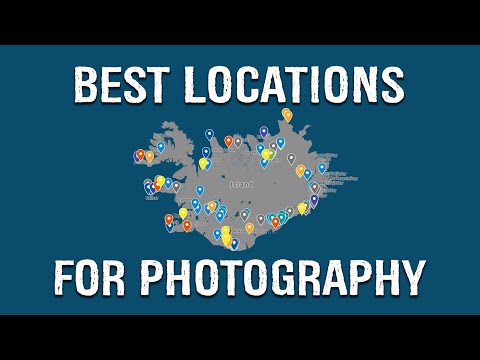
Iceland, a Nordic island nation, is renowned for its dramatic landscape which includes volcanoes, geysers, hot springs, and lava fields. Minimalist yet vibrant cities such as Reykjavik are gateways to an untamed wilderness offering opportunities for adventures and stunning photography. This guide will provide insights on how to make the most of your travel and photography experience in Iceland.
### Best Time to Visit
**Summer (June – August):** The best time for photographers looking to capture the midnight sun when daylight extends throughout the night. This is also the peak season for whale watching and enjoying Iceland’s lush green landscapes.
**Winter (November – March):** Ideal for those hoping to catch the mesmerizing dance of the Northern Lights. Snow-covered landscapes and frozen waterfalls present a unique photographic opportunity during this period.
### Iconic Locations for Photography
1. **Þingvellir National Park:**
Home to the Silfra fissure, where you can actually dive or snorkel between two tectonic plates. Overground, explore old Icelandic parliament sites and capture sprawling landscapes split by dramatic fissures.
2. **Geysir Geothermal Area:**
Located in Haukadalur Valley, it’s famous for its spouting geysers – including Strokkur which erupts every few minutes – and steaming hot springs; perfect subjects against a sunrise or sunset backdrop.
3. **Gullfoss Waterfall:**
Part of the popular “Golden Circle” route, Gullfoss (“Golden Falls”) offers spectacular views from various platforms around it. The roaring water makes it a dynamic subject in all weathers.
4. **Jökulsárlón Glacier Lagoon:**
A stunningly beautiful lagoon filled with icebergs calved from one of Europe’s largest glaciers, Vatnajökull. Capture breathtaking shots of ice on black volcanic sands or boat tours amidst enormous ice formations.
5. **Reynisfjara Black Sand Beach:**
Known for its black pebbles, haunting sea stacks, and powerful Atlantic waves; this location provides dramatic contrasts perfect for moody landscape photos.
6. **Kirkjufell Mountain:**
A favorite among photographers visiting Snæfellsnes Peninsula; Kirkjufell is particularly picturesque when paired with neighboring waterfalls and northern lights during winter months.
### Tips for Travel & Photography
– **Dress Appropriately:** Weather can be unpredictable; layering up with waterproof clothing is key.
– **Rent a Vehicle:** Many of Iceland’s most scenic spots are spread out and require driving on rough terrain.
– **Respect Nature:** Stay on marked paths to protect yourself as well as Iceland’s delicate ecosystems.
– **Use a Tripod:** Especially useful when capturing low-light scenes like auroras or sunset tints over icy landscapes.
– **Golden Hour Advantage:** Utilize early mornings and late evenings when soft light provides ideal conditions for photography.
– **Stay Safe:** Keep distance from edges at cliffs or waterfalls; waves at beaches can be unexpectedly strong.
### Accommodation & Transport
Staying in Reykjavik might be convenient but exploring accommodations like local guesthouses spread across different regions can enhance your experience significantly by minimizing early morning commutes to photographic sites. Regarding transport, while public buses ply major routes, renting a car offers flexibility essential for photographers keen on catching the best light at dawn or dusk.
### Wrap Up
Iceland provides an unparalleled adventure experience coupled with countless opportunities to capture awe-inspiring photographs whether you’re exploring during endless summer days or under winter’s magical auroras. With proper planning around timings, locales, equipment preparation coupled with respect towards nature’s forceful beauty will ensure that your Icelandic journey is both fulfilling and successful photographically speaking!
